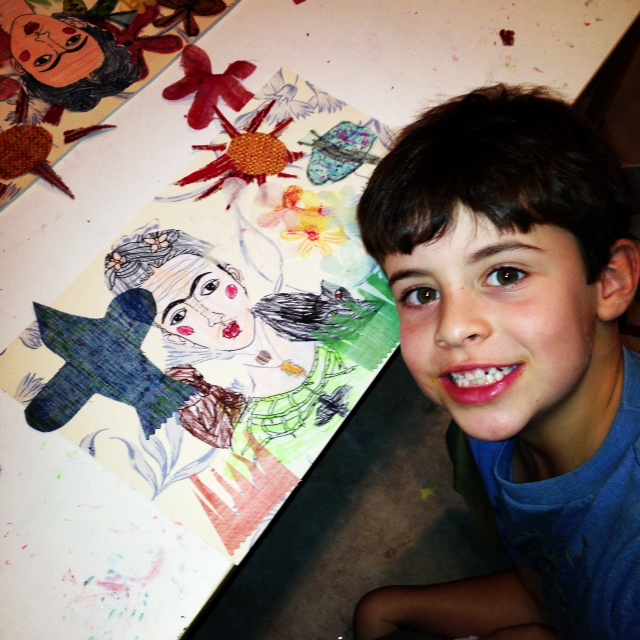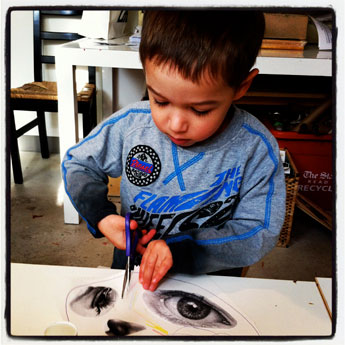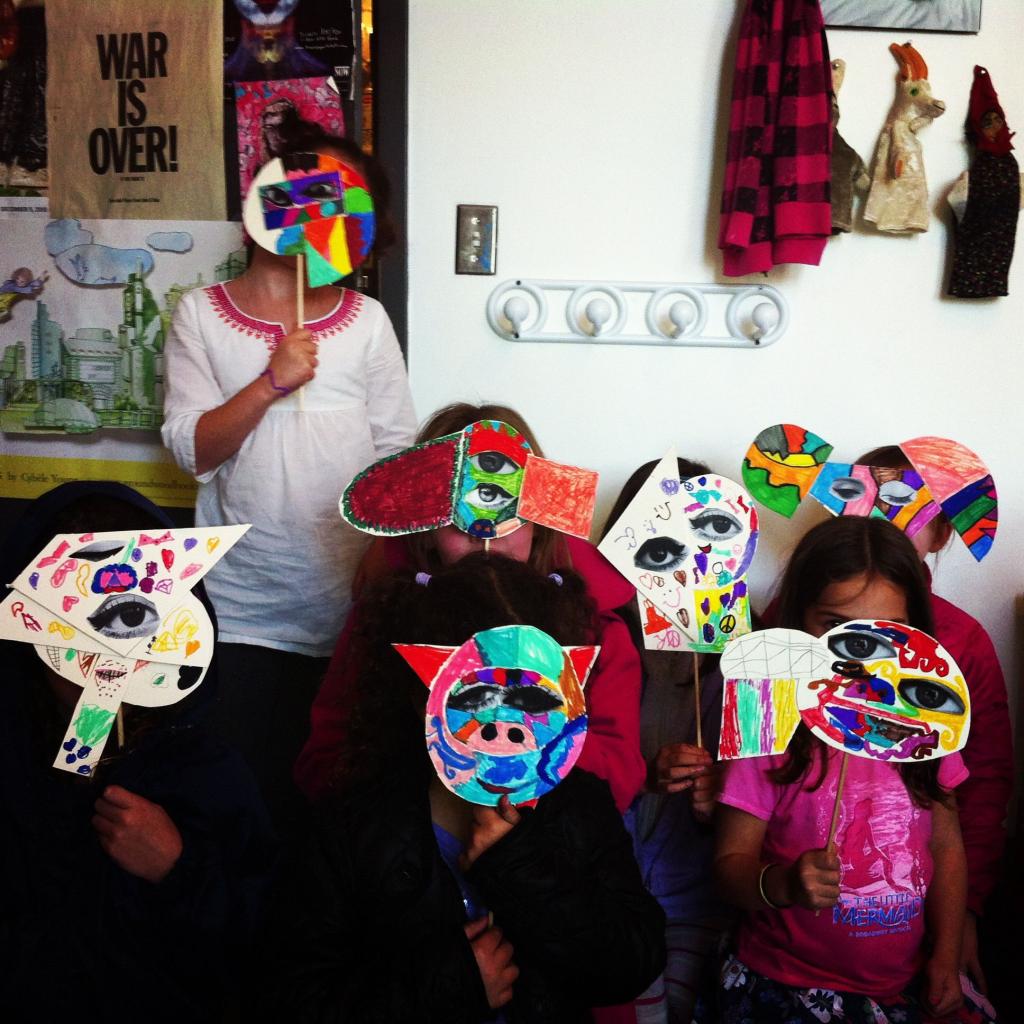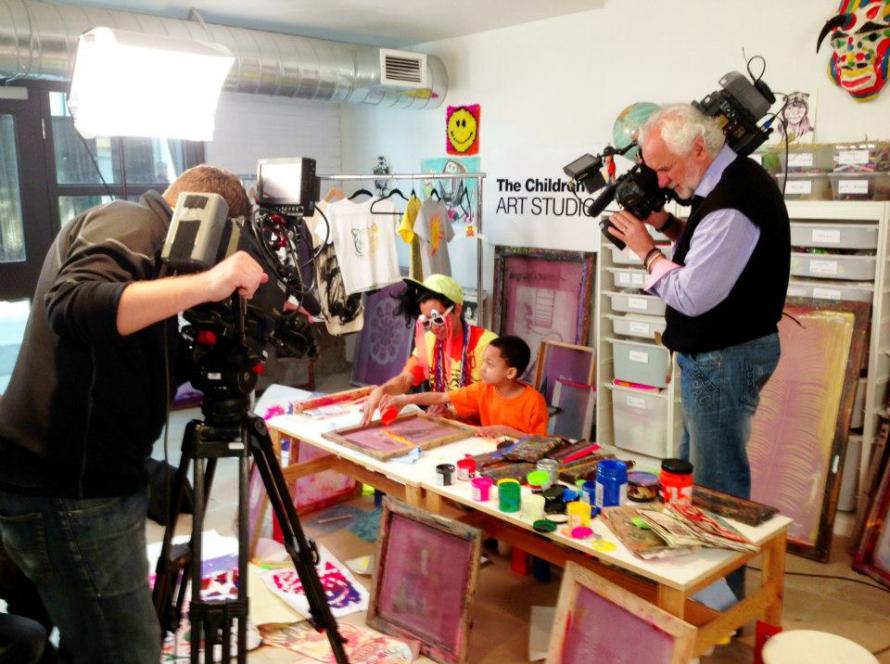Why Collage is an Important Art Activity for JK-SK-Grade 1 Students
Collage-making is a fantastic art activity for young learners in Junior Kindergarten (JK), Senior Kindergarten (SK), and Grade 1. Beyond just cutting and pasting, it is an open-ended, creative process that helps children develop essential skills in a fun and engaging way. Importantly, collage allows students to intersect images that may not seem formally related, fostering their imagination and teaching them that art can be made from unexpected combinations. Here’s why collage is so valuable for children in this age group, along with some tools that are perfect for little hands.
1. Fosters Creativity Through Unrelated Image Intersection
One of the most powerful aspects of collage is how it encourages children to bring together images and materials that are unrelated. This intersection of disparate elements teaches kids that there are no “rules” in art—they can combine a picture of a tree with a cutout of a car, or glue tissue paper next to a leaf, and it will still make sense within their creative framework. This type of exploration fosters divergent thinking, allowing them to see new possibilities in familiar objects and images. It encourages abstract thinking, where two unrelated elements can come together to create something entirely new.
2. Boosts Fine Motor Skills
Cutting, tearing, and gluing are central to making a collage, and these actions are key to developing fine motor skills in young children. Holding and maneuvering scissors, tearing paper with their hands, and applying glue precisely help build the hand-eye coordination and dexterity required for other essential tasks like writing and tying shoelaces. Collage-making provides an age-appropriate challenge that strengthens these skills while keeping kids engaged in the process.
3. Promotes Problem-Solving and Critical Thinking
When creating a collage, children are constantly making decisions—where to place each piece, how to fit shapes together, and which materials to use. This decision-making builds critical thinking and problem-solving skills. Moreover, the act of combining unrelated materials or images often requires imaginative solutions. Children learn to experiment with placement and layering, and if something doesn’t work, they can pivot and adapt, promoting resilience and flexibility in their thinking.
4. Encourages Emotional Expression
Art allows children to express themselves in ways they may not be able to with words. Collage, in particular, provides a way for them to explore feelings, create stories, and represent their emotions visually. By selecting images, colors, and textures that resonate with them, children can convey a wide range of feelings—from happiness and excitement to calm or sadness—in a safe and creative way. The layering and intersecting of unrelated images can reflect the complexity of emotions, helping children process their inner worlds.
5. Teaches Environmental Awareness and Sustainability
Collage is an excellent way to introduce the concept of recycling and environmental stewardship to young children. Using scraps of paper, old magazines, fabric, or natural materials like leaves and sticks encourages them to see value in what might otherwise be discarded. By reusing and repurposing materials, children learn to appreciate the importance of sustainability in a hands-on, creative context.
6. Builds Social and Collaborative Skills
Collage activities can be both individual and collaborative. When working in groups, children learn to communicate, share materials, and negotiate ideas. Collaborative collage-making requires them to listen to each other’s thoughts and make decisions as a team, helping them develop social skills such as cooperation, compromise, and empathy. Working together to create something that combines their individual contributions promotes a sense of community and teamwork.
7. Enhances Cognitive Development
Collage naturally integrates with other subjects, making it a perfect cross-curricular activity. Whether used to reinforce concepts from a story, illustrate a science topic like animals or plants, or explore patterns and shapes in math, collage helps solidify children’s understanding of academic subjects through creative, hands-on engagement. Combining unrelated images can help them make connections across different areas of knowledge, stimulating cognitive growth.
Tools for Collage Making with JK-SK-Grade 1 Students
To make the collage experience safe, fun, and age-appropriate, it’s important to use tools suited for young children. Here are some ideal tools for this age group:
- Blunt-tip safety scissors: Designed for small hands, these scissors help children practice cutting without the risk of injury.
- Glue sticks or washable liquid glue: Both options are easy for little hands to manage. Glue sticks are less messy, while liquid glue allows for heavier materials to be attached.
- Pre-cut paper shapes: For younger students who may not have developed cutting skills, having some pre-cut shapes available can reduce frustration and keep the focus on composition.
- Magazines, colored paper, and scrap fabric: These materials provide a wide variety of textures, colors, and images for children to experiment with in their collages.
- Natural objects like leaves, twigs, and dried flowers: Bringing in elements from nature enhances the sensory experience and promotes environmental awareness.
- Tissue paper: Lightweight and easy to tear, tissue paper adds a fun textural element to collages and can be layered to create interesting effects.
- Crayons and markers: After creating a collage, children may want to add details or draw around their work, enhancing the overall artwork.
Conclusion
Collage is an invaluable art activity for JK-SK and Grade 1 students, allowing them to explore creativity by combining unrelated images and materials. This process builds essential fine motor skills and fosters problem-solving, emotional expression, and environmental awareness. When equipped with age-appropriate tools, children are free to engage in imaginative, open-ended exploration, making collage a key component of their early artistic education.







